Target Species: Texas Red-headed Centipede (Scolopendra heros)

Summer is my favorite season to visit the longleaf pine savannahs of East Texas. In years with decent rainfall the open understories explode with an abundance of wildflowers. Bachman’s Sparrows, Indigo Buntings, and other pineland birds fill the air with their songs, and a variety of butterflies and other insects flush from the grass with nearly every step. This year I was fortunate to make several trips to this special ecosystem with Carolina and my good friend James Childress, who has spent the last several years surveying our longleaf pine forests for the critically endangered Louisiana pine snake.
Diversity and abundance of blooming wildflowers typically peaks from May to June, but may be either prolonged or accelerated by prescribed fire. The longleaf pine savannah is a fire-dependent community, and evolved with frequent low intensity fires that inhibit woody vegetation from encroaching in the understory and promote the growth of herbaceous species. Today, lightning ignited fires are less common due to changes in forest cover types and fire suppression activities. Because of this, resource agencies like the U.S. Forest Service perform routine burns to maintain these systems for species diversity and the benefit of protected species like the Red-cockaded Woodpecker.
I’ve always enjoyed observing the wildflower bloom here. From year to year the species composition varies slightly. Certain species may flower prolifically some years, but can be very sparse in others. This year was a poor year for Carolina larkspur (Delphinium carolinianum). Fortunately there were still a few prime specimens to be found, however.

This year was better for woodland poppymallows (Callirhoe papaver). Under the longleaf they vary from light pink to deep purple.

There are a number of yellow composites that can be found among the longleaf. One of the most spectacular is the the rough coneflower (Rudbeckia grandiflora) which can reach heights of four feet or more. This was a great year for them and I was presented with many wonderful photo oppportunities.

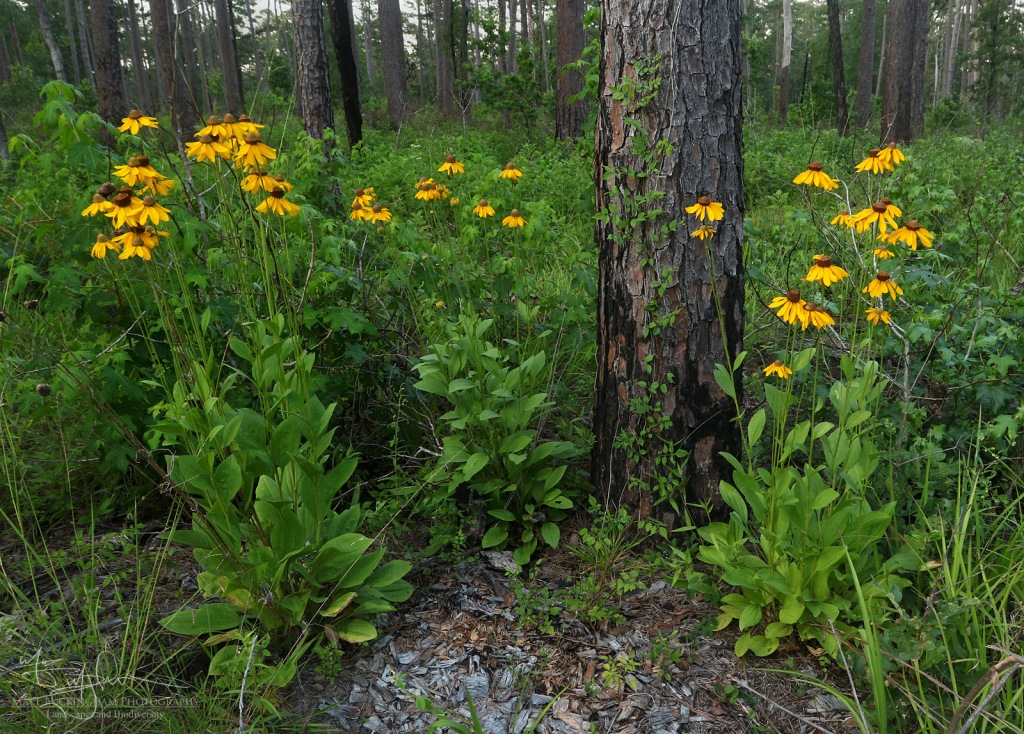
There are a number of species of sunflower that can be found in the longleaf pine savannah. This summer we were fortunate to find a good showing of both hairy sunflower (Helianthus hirsutus) and the uncommon ashy sunflower (Helianthus mollis). H. hirsutus tends to prefer deeper sands while H. mollis occurs in shallower sands and other coarse substrates of a loamy or clayey layer. H. mollis is generally found in high quality habitat and seems particularly susceptible to ground disturbance.


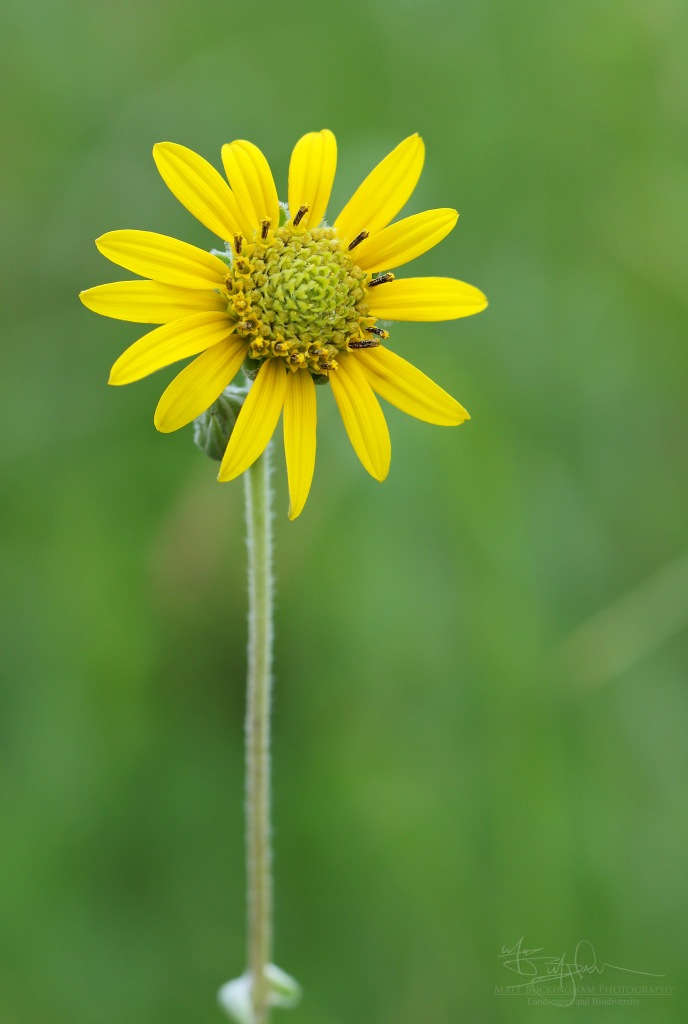
Though superficially similar to sunflowers, yellow crownbeard (Verbesina helianthoides) is a member of a different genus. The specific epithet, helianthoides hints to its resemblance to the sunflower genus Helianthus. V. helianthoides is another uncommon composite in East Texas, and I’ve only found it at a few locations.
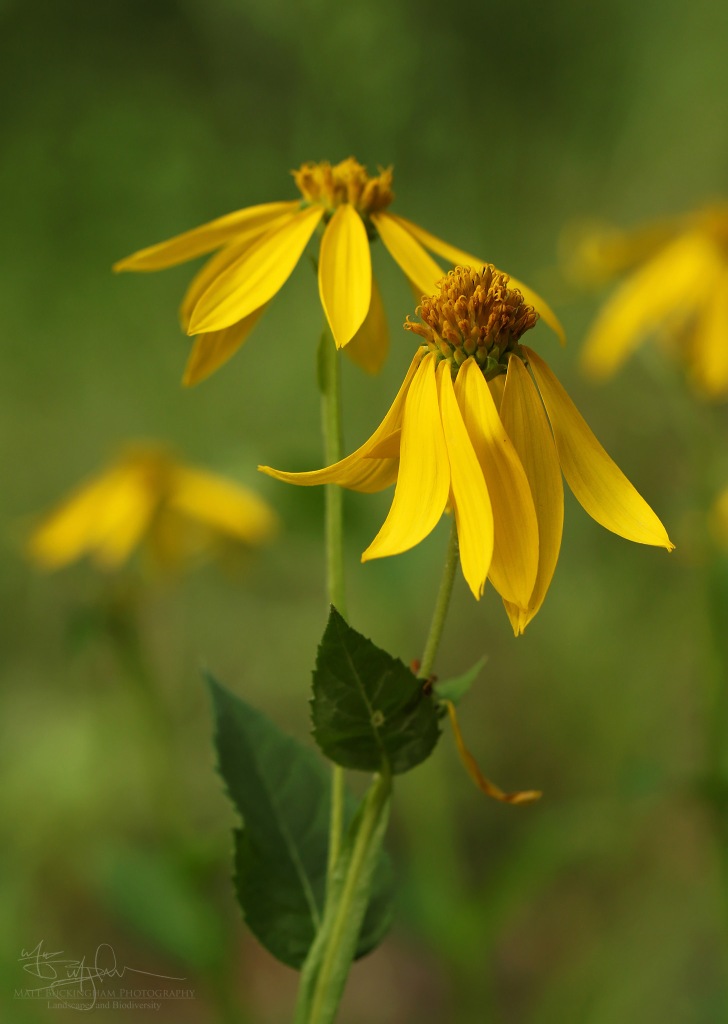
I was able to tag along with James a few times over the summer as he surveyed a private tract of longleaf that ranks as one of the finest remaining examples of longleaf pine forest in the West Gulf Coastal Plain. The landowner is conservation minded and manages with regular prescribed fire and burns well into the growing season, which closely mimics the summer fires that occurred prior to European settlement. Here we were awestruck by exceptional wildflower displays including a seep loaded with grass pink orchids (Calopogon tuberosus) and entire hillsides blanketed with prairie blazing star (Liatris pycnostachya). Fortunately this special place is protected through a conservation agreement with the Nature Conservancy in Texas.
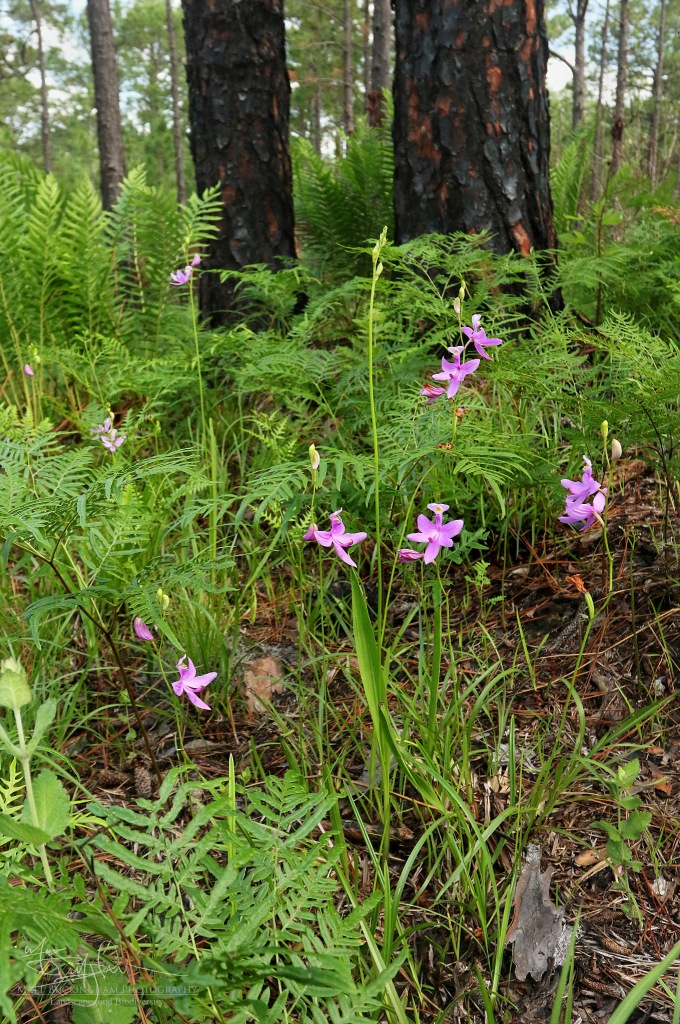
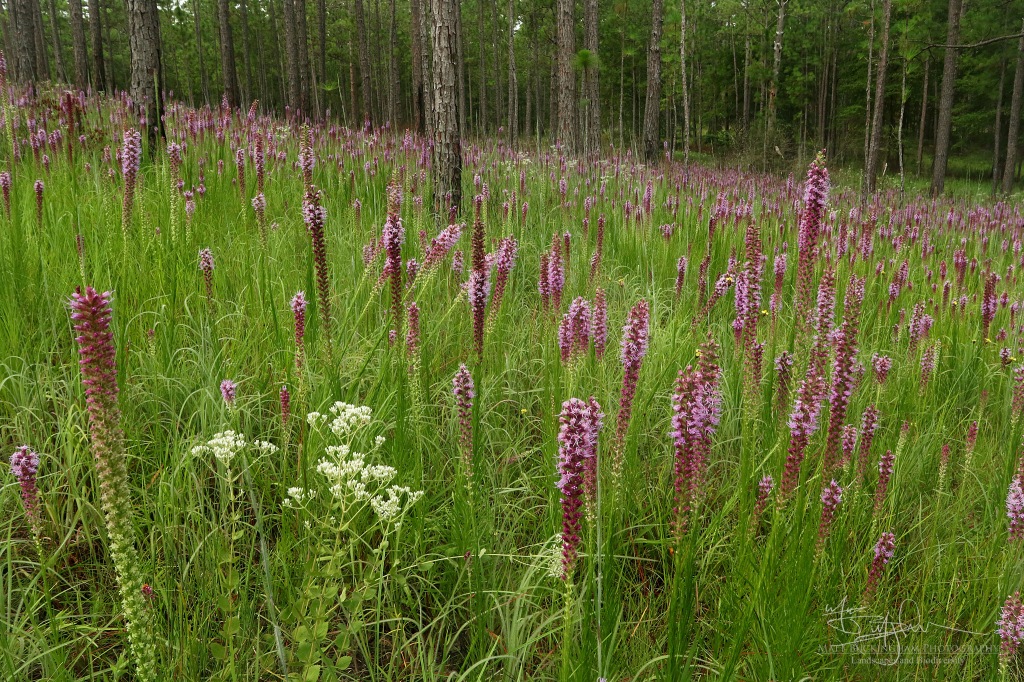
Several species of Liatris can be found in the longleaf pine savannas of East Texas. One of the more common is the scaly blazing star (Liatris squarrosa). These and other species of Liatris bloom at the height of summer and are relished by a variety of pollinators.
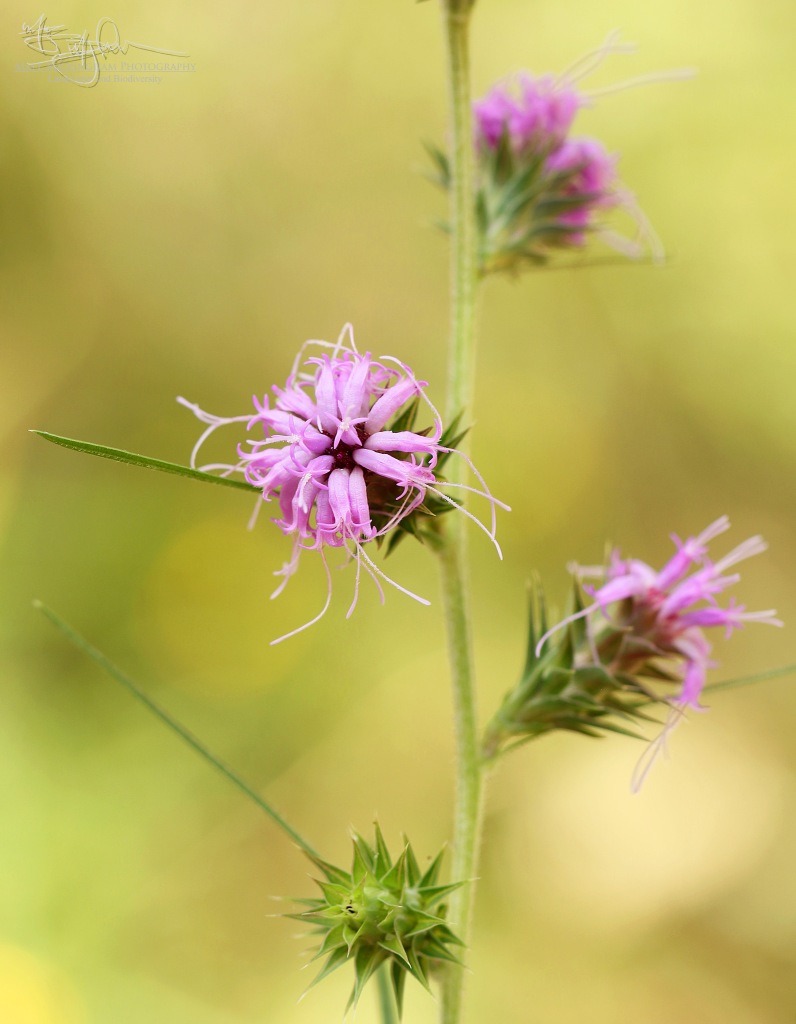
Of all the aster species found in the Pineywoods, I find the barrens silky aster (Symphyotrichum pratense) to be the most striking. It can be found growing on the margins of seeps where there is a steady supply of moisture even during the hottest part of the year.

One of my favorite of nature’s gifts is a hard summer rain in the Pineywoods. Torrential downpours are often preceded by sweltering temperatures, and the precipitation provides a welcome relief from the blazing sun. The animals, too, welcome the relief and following the rains the savanna comes to life.
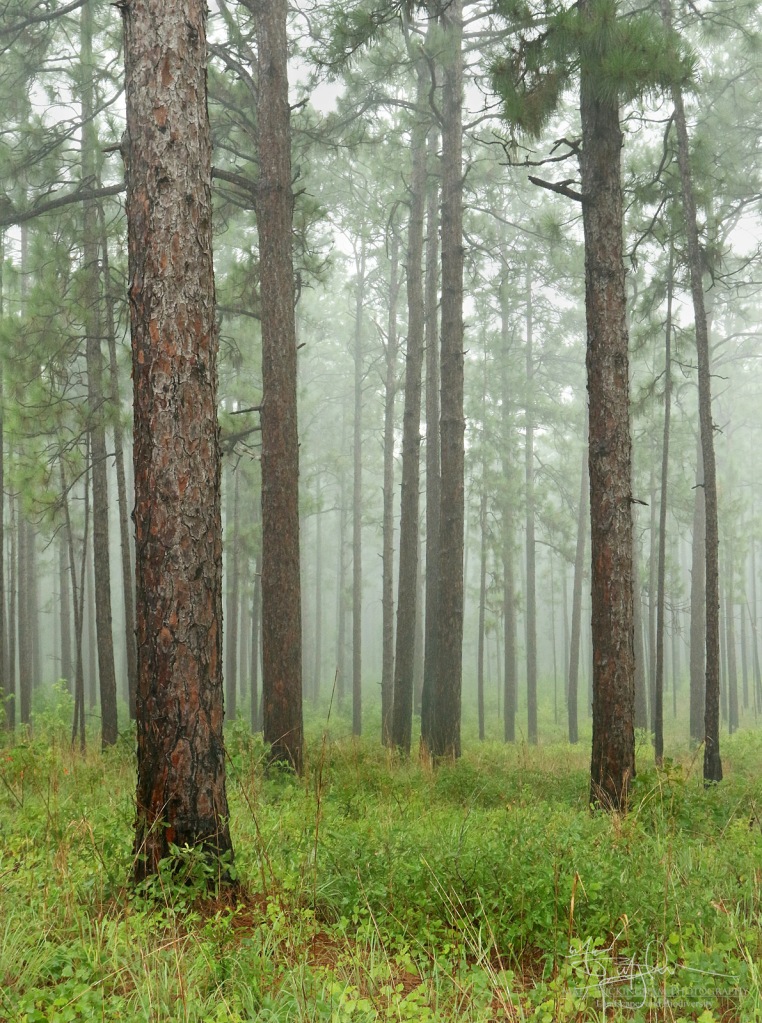
Several species of reptiles and amphibians make the longleaf pine savanna home. The tan racer (Coluber constrictor etheridgei) is endemic to longleaf pine forests of extreme eastern Texas and western Louisiana. Here an old battle scarred racer slithers across the trunk of a fallen longleaf.
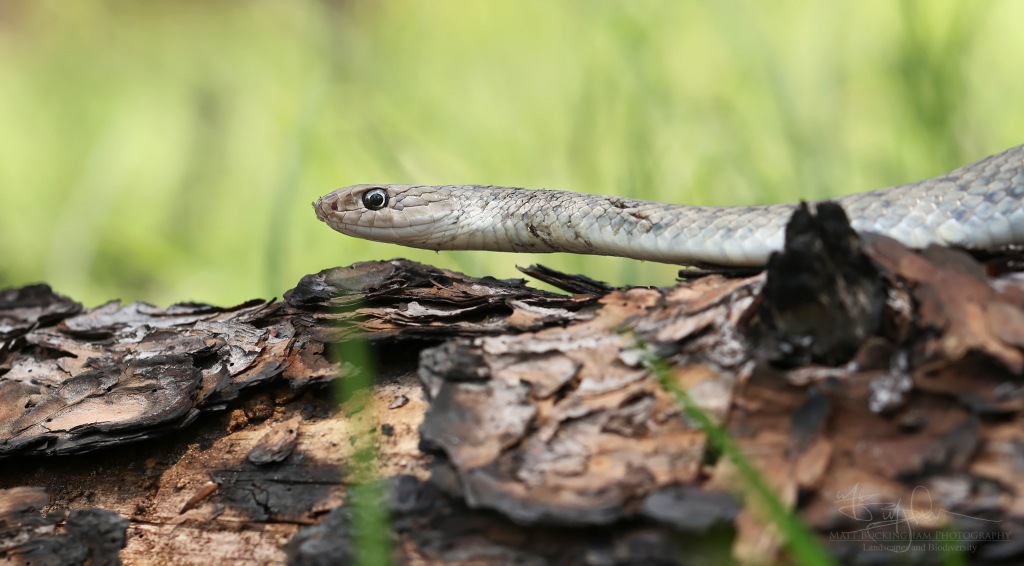
The diversity of flowering plants in a high quality longleaf pine savanna harbor an equally stunning variety of invertebrate life. Some, like the dung beetle Dichotomius carolinus) are seldom seen but play an important roll as a means of waste disposal as they gather, bury, and consume the feces of a variety of animals.
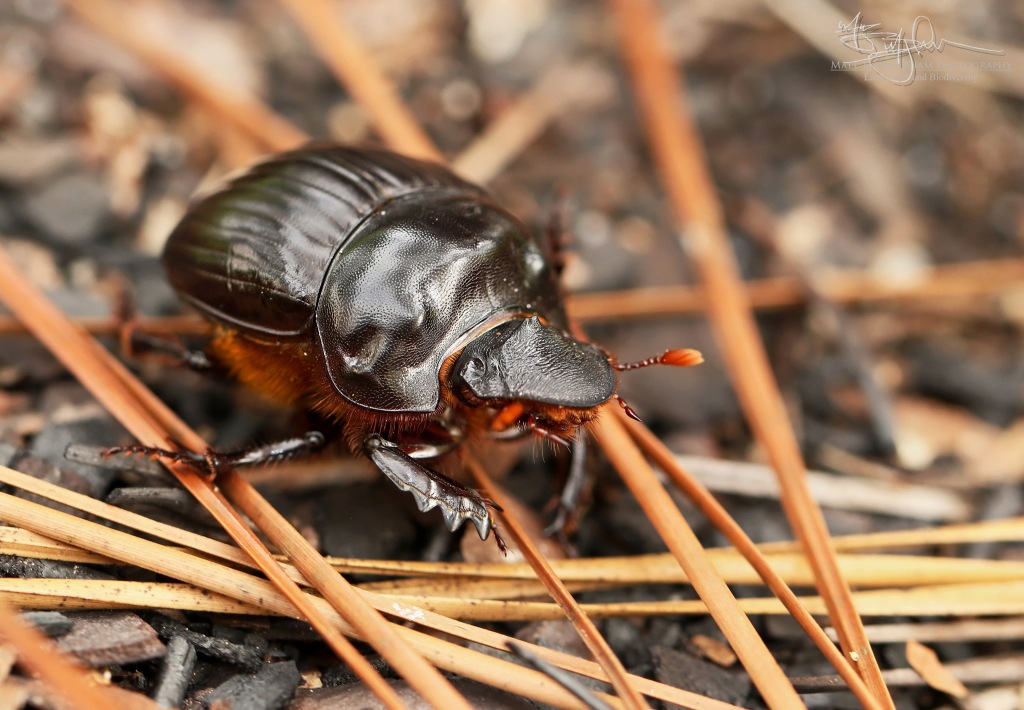
I have long endeavored to capture an image of the impressive American bird grasshopper (Schistocerca americana). Though they can be quite common, they are prone to flight long before they’re initially spotted. Once disturbed, they fly high, fast, and far. After this initial flight they are nearly impossible to approach. For whatever reason, this individual was relatively indifferent to my presence, and allowed me to photograph it for several minutes.

The most impressive invertebrate of the longleaf pine savanna, however, is the Texas red-headed centipede (Scolopendra heros). These giants seem like the things of nightmares. They are lightning fast, incredibly agile, they have front legs that are modified to act like massive fangs that are capable of inflicting extremely painful bites, and they are huge (occasionally 8 inches or longer). In reality they are non-aggressive, inoffensive, secretive, and seldom seen. They are prone to flight and only attempt to bite when physically restrained. Scolopendra heros is primarily a species of deserts and semi-arid grasslands, however they range as far east as western Louisiana and Arkansas. In East Texas they are relatively common in longleaf pine savannas and other woodlands over deep sandy soils. James and I found a few out and about one cloudy day in May.

The species presented here are but a small fraction of the incredible biodiversity of longleaf pine savannas. These are among the most diverse communities in the country. Unfortunately, in the past 150 years, these savannas have been reduced to a fraction of their former range. Fortunately management restoration of longleaf pine has become a priority of resource agencies and nonprofit conservation organizations, and the iconic longleaf pine savanna is slowly reclaiming parts of the southeast.

Superb photos, and I especially enjoyed the Carolina Larkspur one.
LikeLiked by 1 person
Thanks so much!
LikeLiked by 1 person
Immaculate closeups, as ever.
LikeLiked by 1 person
Thanks! Looking forward to our spring wildflowers.
LikeLike
Amazing photos Matt! Thoroughly enjoyed reading about each one! Thanks!
LikeLike
Pingback: 2020 Highlights in Biodiversity – A Naturalist's Journey